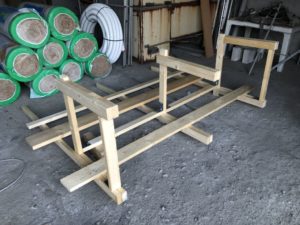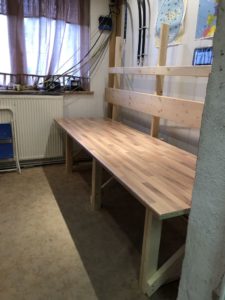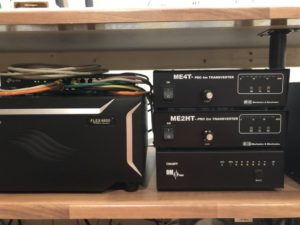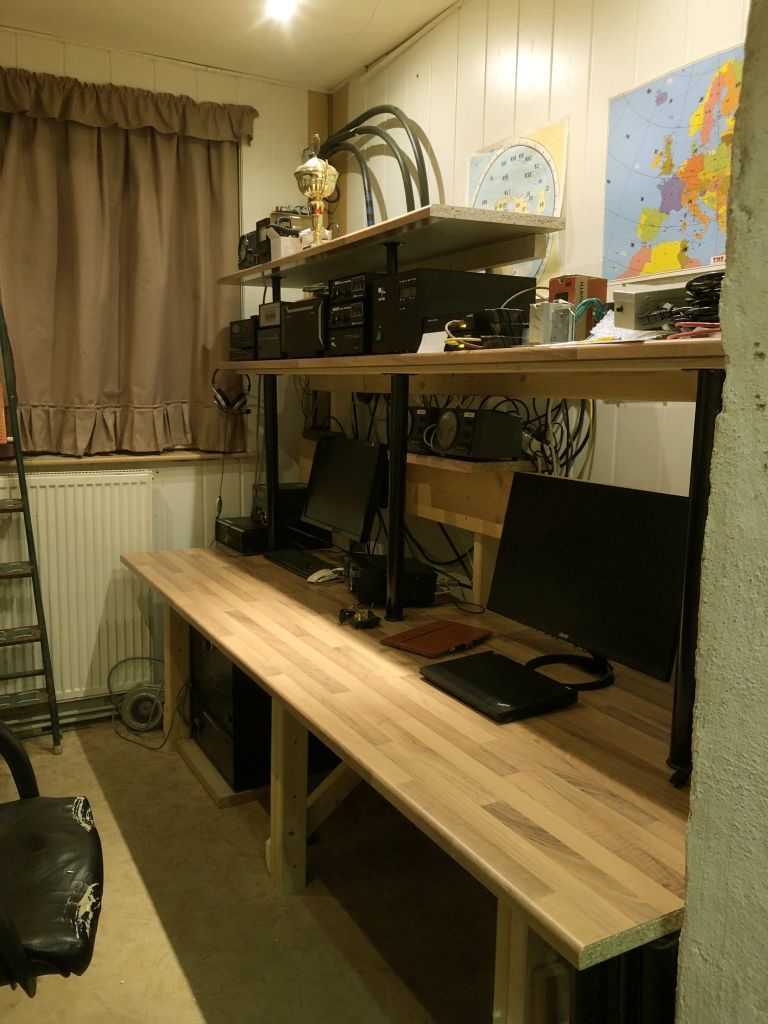Moving QTH is basically finished, everything’s setup in the new flat … living room, kitchen, children’s room, a.s.o. all operational, just the shack/office needs a bit more work. 😀 Anyway, time to play some radio again in the Perseids meteor shower! 😎
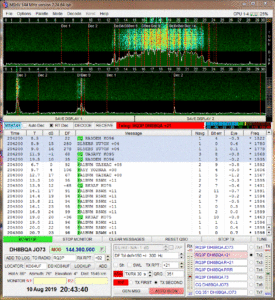
Multiple stations in one reflection, nicely sorted on the screen – one of the advantages of the MSK144 mode.
Activity was quite nice, especially from Russia! Worked a lot of new callsigns and a lot I had only worked on HF before! While I had written last year that about 30% of the traffic was on MSK144 and 70% on FSK441 it was the other way round this year – 70% on MSK144 and 30% on FSK441, if at all! While I see the benefits of MSK144 – it’s quite convenient with no false decodes, no digging into the decodes to see what’s in there, all printed nicely on the screen, a.s.o. – it certainly doesn’t fit the bill for working the real DX.
What most people (especially the converts from HF FT8 to VHF MSK144) do not know is that MSK144 also has some (serious) drawbacks compared to FSK441! It’s about 2-3 dB less sensitive and due to it’s FEC (forward error correction) it needs reflections of at least 200 ms length to decode at all! So a reflection of 80/1 (80 ms seconds long, 1 dB over the noise, not uncommon) will not be decoded in MSK144 while in FSK441 it’s usually good for a (partial) call and report! Especially on long haul DX, i.e. over 2.000 or even 2.100 km, or with QRP, it can make all the difference between a complete QSO and an NC contact!
Another thing new guys didn’t know is that while 15 seconds periods are the standard on 6 & 4 m and the default in WSJT-X 🙁 it’s usually 30 seconds periods on 2 m, at least on the calling frequencies! Reason is keeping it “compliant” to FSK441 which is 30 seconds. So besides the “usual” QRM by people using the wrong periods there was some additional chaos by people running 15 sec periods while everybody else was on 30 sec. Seems some elmering is needed which I did for a few people I had access to. They were all grateful to get the advice how to do it right as it were usually their first steps into the world of VHF digital. Just keep in mind they do not do it intentionally! We were all beginners at some time … 😉
Highlight on the 8/8 was working RW3TJ, always thrilled to cross the line into the LOxx squares. 😉 Not exactly VHF but working PZ5CO and FY5KE with good signals on 10 m late at night on the 9/8 was thrilling, too! The path works quite often even in sunspot minimum, worked them again during the weekend handing out some points in the WAE-CW contest on HF, too. 😉 Did not expect to work (m)any new squares on 2 m during the shower but after almost an hour I completed with OY1R for a new one. It took that long because Regin is only running QRP (50 W to a 7 ele Yagi) so only very strong reflections will work.
Spent quite a while to work Mek, this time in Hungary (JN97) as HA/SP7VC, for a new one on 4 m on 10/8. These QSOs are extra difficult as I’m QRP only on 4 m and the distance is normally too short for MS so lots of patience needed – thanks mate! YO8SAO/KN36 and UT9NA/KN49 were much easier for additional new ones on 2 m. 🙂 I was very excited when I decoded R9JBN with his CQ on 144.360 MHz MSK144 at 20.18z! Could it really be Asiatic Russia on 2 m? But his CQ message included LO13 as his locator which is definitely not UA9 but UA4 so I guess he was rather /4. Still a nice distance of +/- 1.900 km. Unfortunately that CQ burst was the only thing I heard from him …

A full period of reflections by the C37MS DXpedition during our QSO. The burst was indeed almost 1 min long. 😎
Very happy with another 4 new ones on 2 m on the 11/8, namely YO8TNB/KN37, RA1TL/KO67, UT3MD/KN99 and LA/SM5EPO/JP76. PeO had been traveling Scandinavia for 2 weeks activating rare grids for the MS community, thanks a lot, man, appreciated the opportunity!
Didn’t work much on 6 m as it’s usually the same guys over and over again on 6 m MS, not that much activity there. The band provides plenty of opportunities with Sporadic-E during the summer, that’s probably the reason why there’s a lot less interest in Meteor Scatter on Six. But when TA4SO/KM47 was spotted on the cluster I couldn’t resist to check if I would see some reflections, distance is well over 2.000 km. And there he was! As I could copy him almost consistently over quite some time (just an awful lot of QSB) I think it was rather ES than MS. But no matter what, he provided the only new one on 6 m. 😉
The 12/8 saw our friends from Dresden (DH5FS & Co.) getting active from the Ukraine as EM44T activating rare square KN38! 😎 They had blown their 2 m pre-amp transistor right away so had to do some surgery in the field, i.e. ripping out the transistor of the 70 cm pre-amp to put it into the 2 m transverter pre-amp, luckily it was the same type! They produced excellent reflections on both 6 & 2 m although the distance is quite short already. But it seemed they had trouble hearing on 6 m, something to be checked when back home.
OH7TE was visiting some relatives and took his 4 m gear along and spent some time on the air, thanks for KP42 on that band, Yussi! UT7KF/KO21 took quite a while to complete on 2 m, again a very short distance for MS and only QRP there. On the contrary UA6LQZ/LN09 produced excellent reflections over quite some long distance! Wonder what equipment he was running! 😉 R1OAK/LP05 was over 2.000 km so decided to try on FSK441. He has only 100 W and a long yagi so I expected it would take a while to complete (if at all) but surprisingly he produced some really nice reflections so we were done after 15 minutes already. 😎
Another contact to mention is certainly the one with UT8AL/KO61. I have worked Alex numerous times during past years, be it on HF in contests or on 6 m or on 2 m via ES, MS and even TR. Our first QSO (SSB-MS!) was on 12/8/1999, so exactly 20 years ago! 😎 What makes every 2 m QSO with him so special is knowing he’s only running a very old analogue FT-225RD from 1972, nominally putting out 20 watts which makes it just 16 watts at his antenna which is an almost as old 21 ele KLM yagi on a 12 m boom! Seems his antenna is doing all the work, he was really fireworking with this QRPPP setup!

A full period snapshot of my reflections during a 2 minutes mega burst as recorded by UT6EY.
The maximum was predicted to be early morning of the 13/8. Judging from length and number of reflections I think it was rather on the 12/8 around 22 o’clock. Stef, F4EZJ, asked to try SSB-MS as reflections were still quite good on 13/8. There was a biiiiig burst right away when he started calling me so we completed immediately and had a great one burst QSO. 😎 Pity neither of us had a recorder handy … Icing on the cake was the ES opening on 4 m in the afternoon. While it was very much in & out it was good enough to provide another two new squares. 🙂
In total I made over 100 QSOs, the full log can be viewed here. All in all some fun time on VHF again and happy with the (unexpected) results (of working so many new squares). 😉



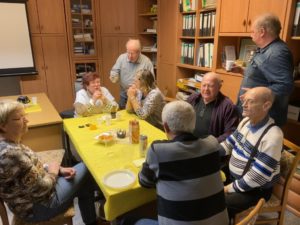



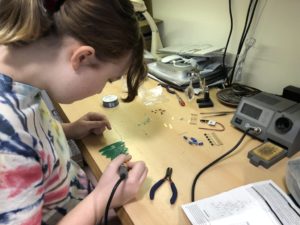

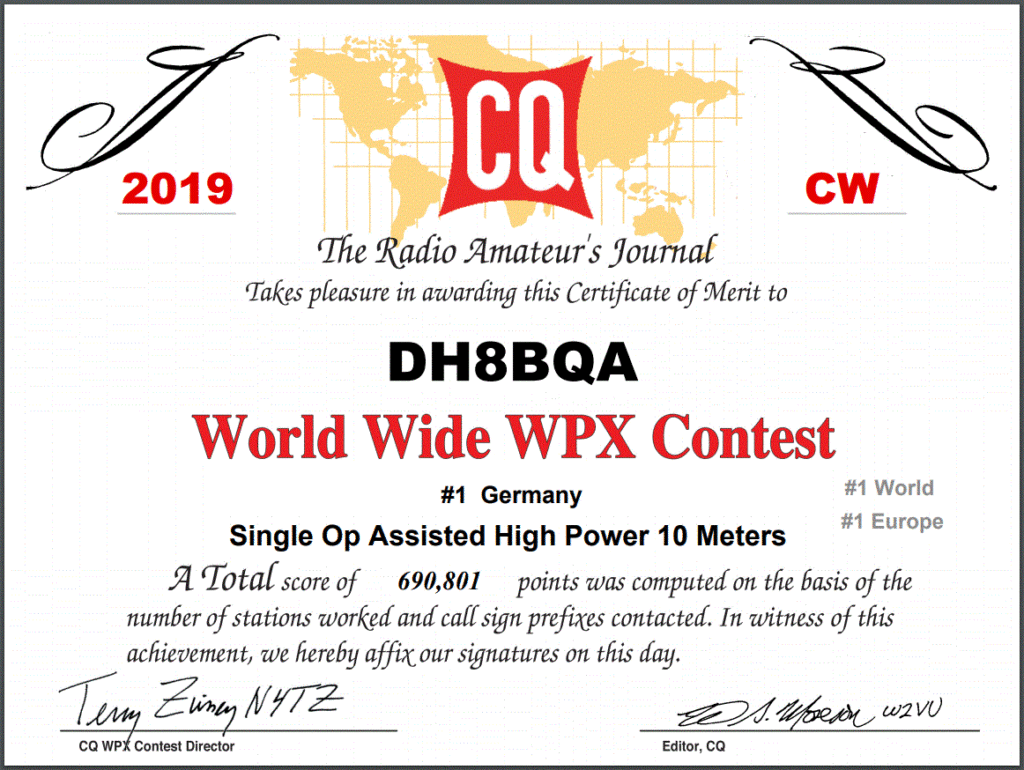

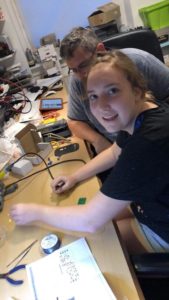




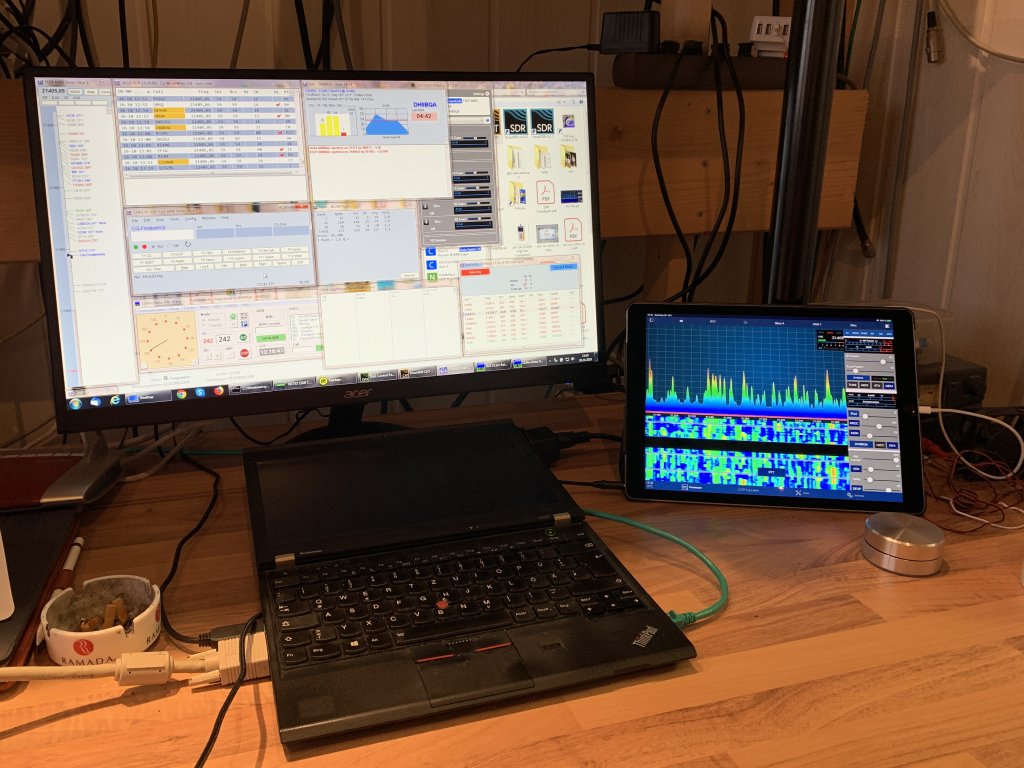

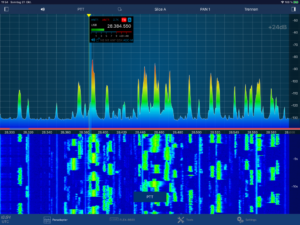


 Took a good night’s sleep and everything was much better on Sunday, condx as well as my health. 🙂 Had a great 1,5 hours run on 40 m with almost 90/hour max! That felt like being on the DX side of the pileup bringing back nice memories of our Belize trip earlier this year. 😉 Another good hour with almost 50 QSOs later on 20 m but although it’s really not bad for being an average station in DL / Europe amongst thousands of others it still felt kinda slow. Of course much better than running at 25/hour if at all in other hours … really looking forward to the next sunspot maximum for some more fun again! Rumors are it will be around 2024 …
Took a good night’s sleep and everything was much better on Sunday, condx as well as my health. 🙂 Had a great 1,5 hours run on 40 m with almost 90/hour max! That felt like being on the DX side of the pileup bringing back nice memories of our Belize trip earlier this year. 😉 Another good hour with almost 50 QSOs later on 20 m but although it’s really not bad for being an average station in DL / Europe amongst thousands of others it still felt kinda slow. Of course much better than running at 25/hour if at all in other hours … really looking forward to the next sunspot maximum for some more fun again! Rumors are it will be around 2024 …







